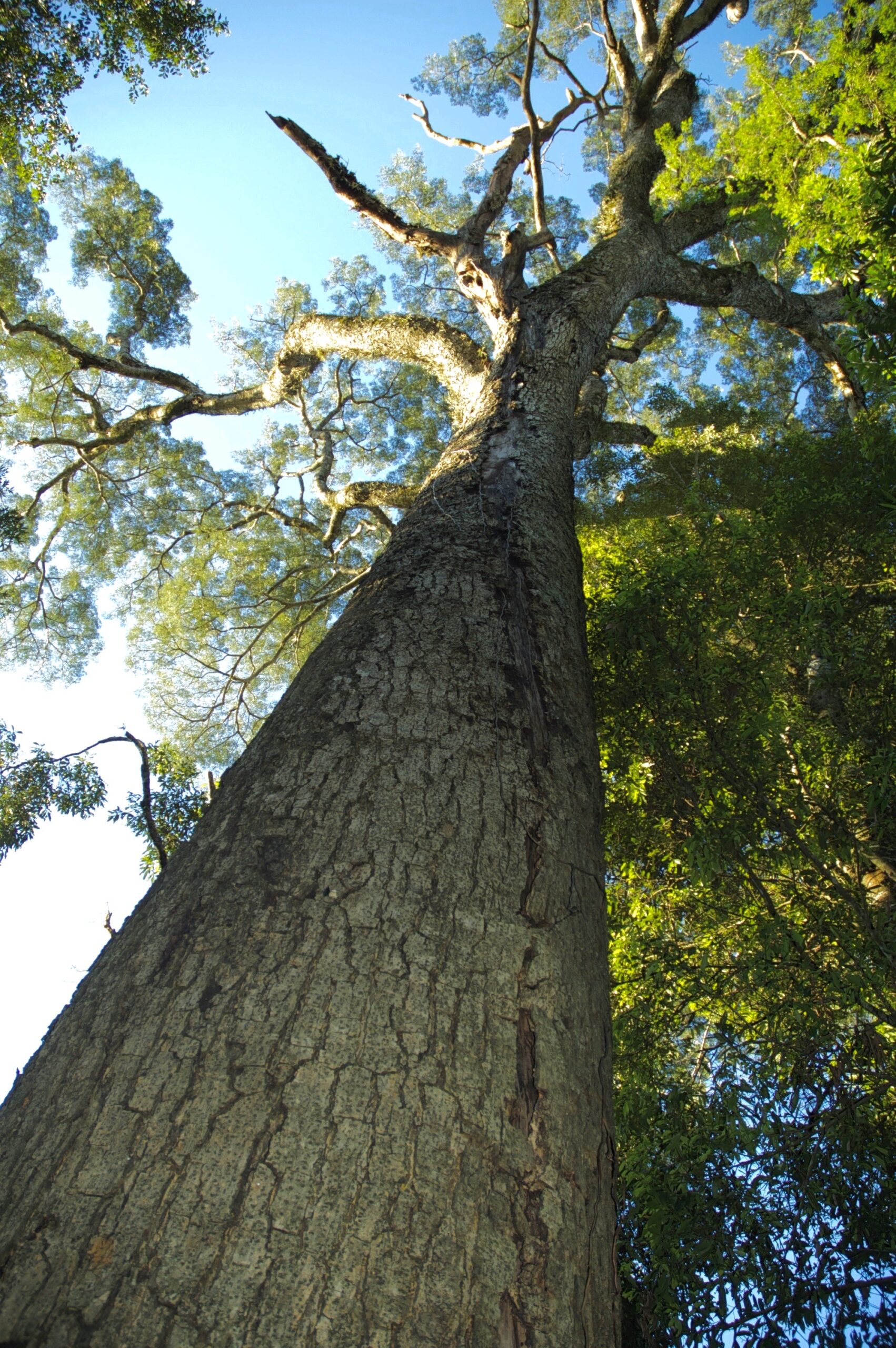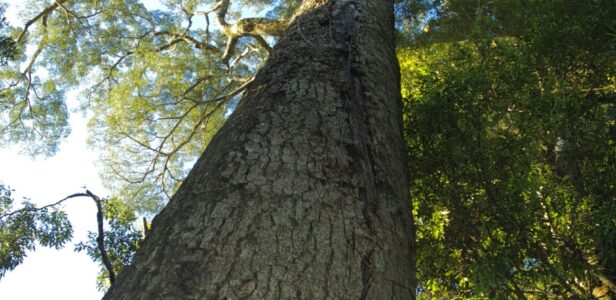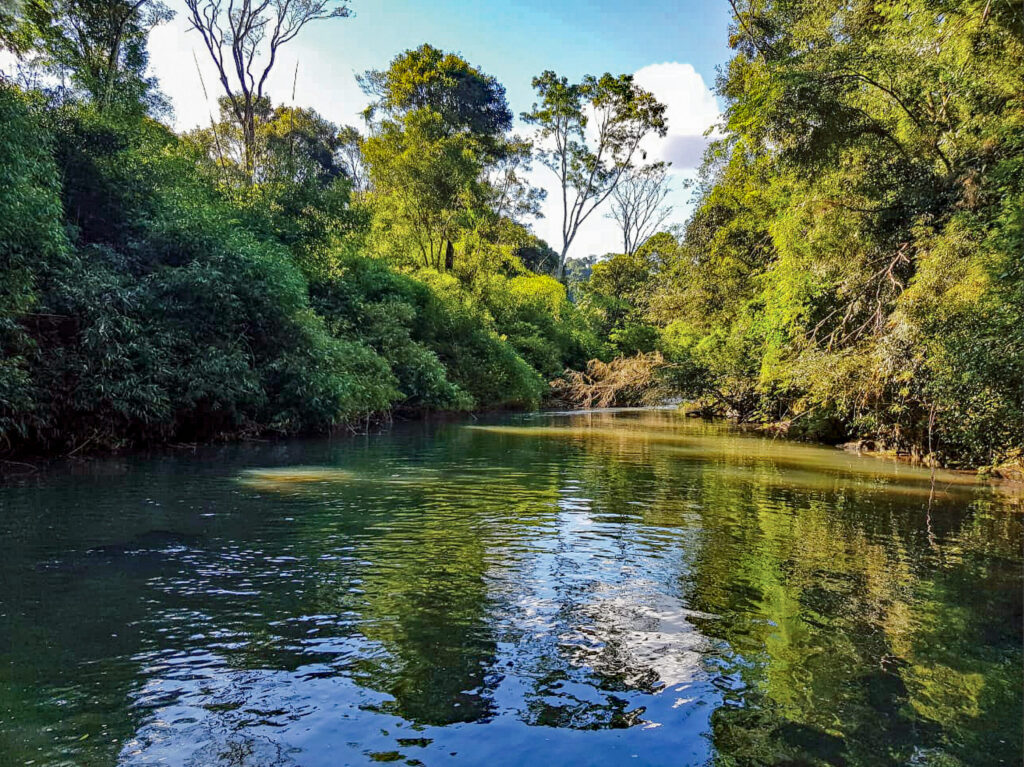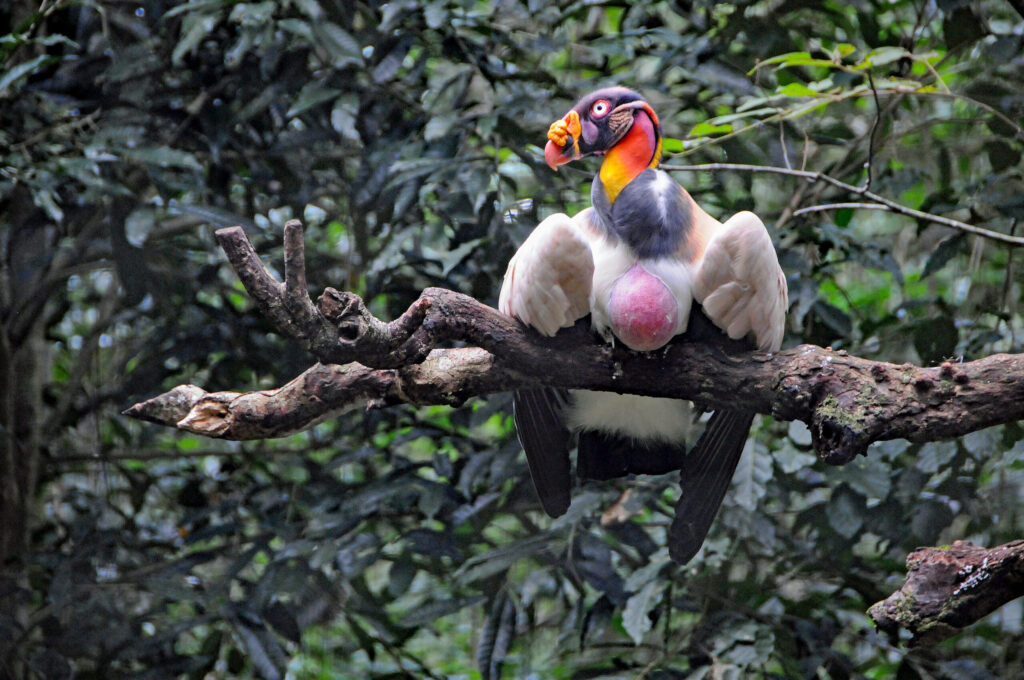There are about 50 different native tree species in Switzerland. In the world’s most species-rich forest, up to 450 tree species have been counted – per hectare! «Mata Atlântica» is not only the most species-rich forest on earth, but also one of the oldest land habitats ever, dating back more than 6 million years. Originally, it covered huge areas in Paraguay, Brazil and Argentina. Unfortunately, it is also one of the most endangered. Only 8% of the original area remains and only 15% of this small remnant is protected. Clearing and soy cultivation are in full swing in Paraguay, for example. The soya is shipped down the Paraná in huge barges. It is desired on the world market as cattle feed and for the production of alternative fuel. Currently, the Mbyá Guaraní, the indigenous people of these forests, are fleeing from the clearing and soy cultivation to the Argentinean province of Misiones. There are only a few areas in Argentina where the Gurarní communities can still live and are tolerated. The space for the refugees is limited.
The Mbyá should get back their forest
The Mbyá Guaraní, the indigenous people in the tri-border region of Paraguay, Brazil and Argentina, feel that they are part of this forest and that the forest is part of themselves. In their hands, the forest is therefore best protected. Owning a piece of forest was originally as absurd for the Mbyá as owning a piece of sky. That is why it was easy for the white immigrants in the 20th century to appropriate the forest. Today, every area of these forests has an owner. «Ypy» means «beginning». The YPY project wants to be the beginning of respectful treatment of these people and their exciting culture of sustainability. The idea of buying back forest areas is that of the Mbyá themselves. In Argentina, the indigenous people have won the right to form legal entities into whose collective ownership the forest will be transferred. The legal entity organises and administers itself. It is not subject to state control – comparable to church organisations. However, it may not resell the forest or use it commercially. In return, no taxes have to be paid for the forest. For each community, this legal entity is now gradually being created. Local people, led by the doctor Dr. Mariana Mampaey, kept finding forest owners willing to sell. US$ 1,000 to 1,600 must be paid per hectare.



